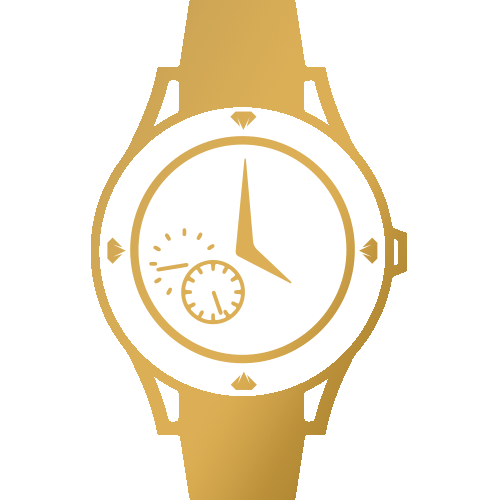

Iconic pieces: Rings of Power
This article contains spoilers for Amazon Prime’s live adaption of “The Lord of the Rings” by J.R.R. Tolkien (up until Season 2: Episode 8).
Rings, Jewelry, and Adornments in The Rings of Power: Their Symbolism and Meanings
In the fantastical world of J.R.R. Tolkien, jewelry and adornments often hold great significance, serving not only as objects of beauty but as symbols of power, fate, and identity. In The Rings of Power, the rings and other forms of jewelry worn by characters reflect deeper themes that shape the entire narrative of Middle-earth.
From the enchanted Rings of Power to the regal jewels of Númenor and the simple adornments of the Harfoots, each piece tells a story. In this article, we’ll explore the hidden meanings behind the rings, jewelry, and other adornments seen in The Rings of Power and what they reveal about the characters and their fates.
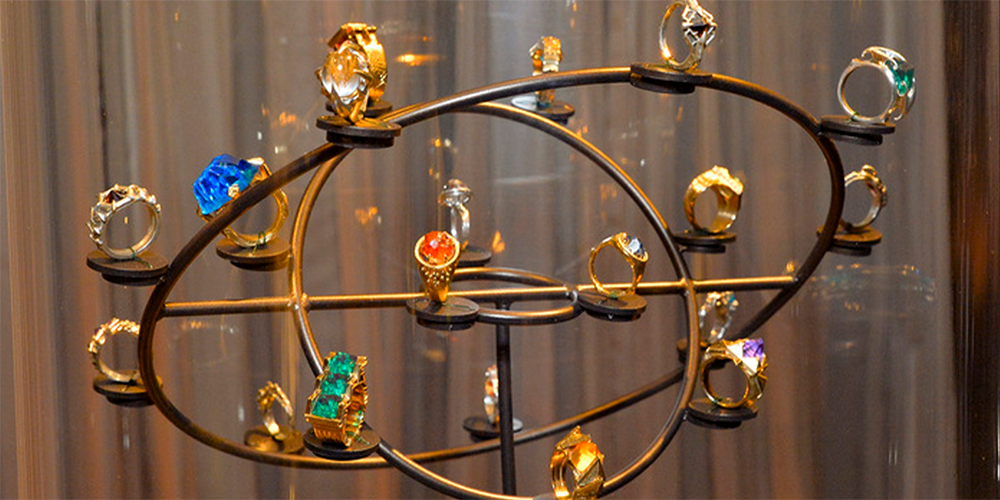

Common Symbols Throughout the Show
Throughout The Rings of Power, symbols like light and darkness, stars, water, fire, and crowns are woven into the story, reflecting key themes of power, fate, and identity. Light often represents purity and hope, while darkness symbolizes corruption and fear. Stars and water connect characters to their divine ancestry and foreshadow both preservation and destruction. Fire symbolizes Dwarven craftsmanship and ambition but also hints at greed’s potential for devastation. Crowns and rings, particularly the Rings of Power, embody cycles of leadership, temptation, and the consequences of succumbing to power. Understanding these symbols deepens the experience of Middle-earth’s rich, complex narrative.
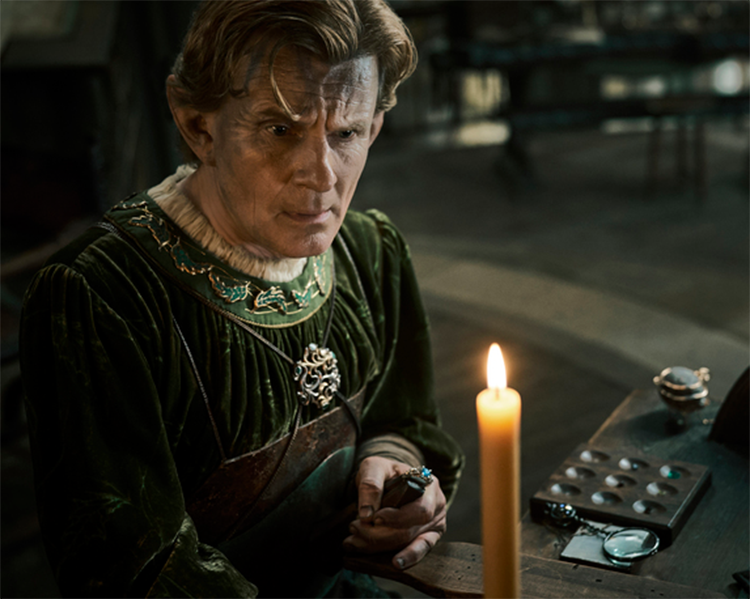
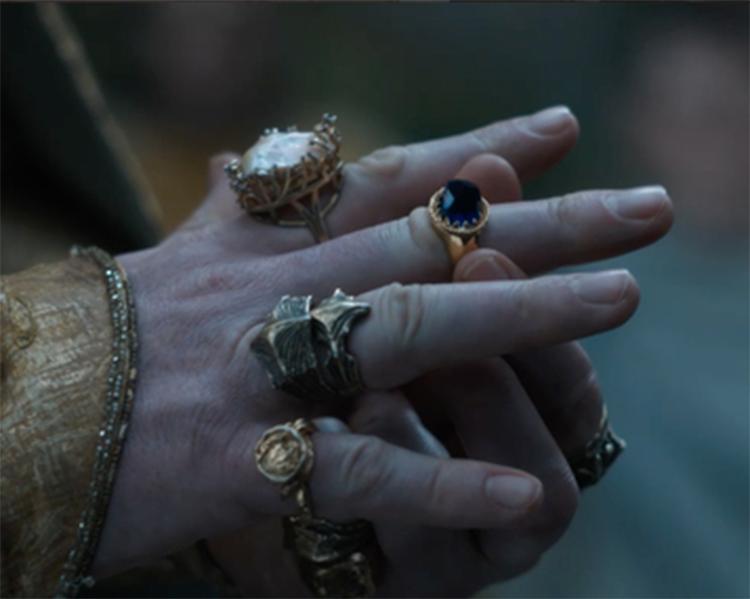
The Rings of Power: The Core Symbolism
At the heart of Tolkien’s legendarium lies the mythos of the Rings of Power. These rings are not mere pieces of jewelry; they symbolize the ultimate struggle between good and evil, free will and domination. Crafted by the Elven-smiths of Eregion under the influence of Sauron, the rings play a central role in shaping the destinies of their bearers and Middle-earth itself.
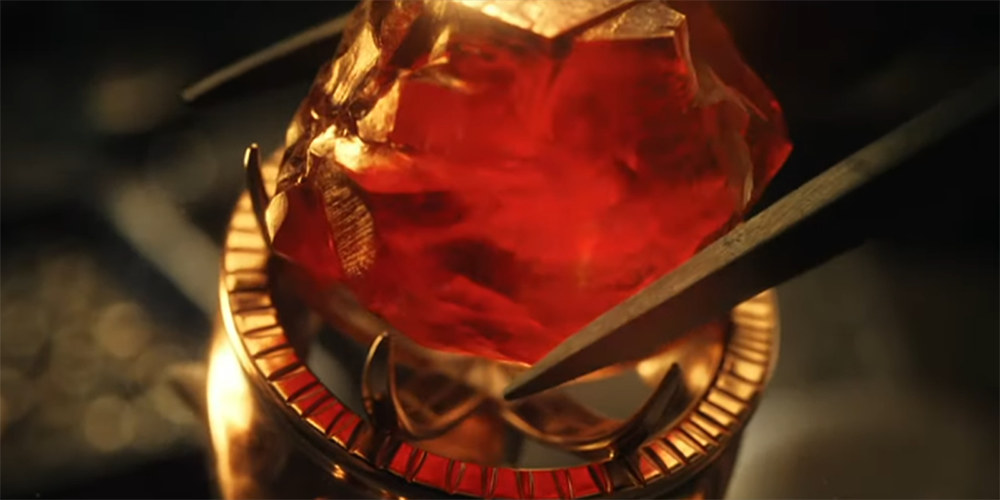
The Nine, Seven, and Three Rings
Nine Rings Were Given to Mortal Men
The Nine Rings, given to mortal men, represent the corrupting influence of power. The men who received these rings were once noble kings, warriors, and sorcerers, but their desire for more power led to their downfall, turning them into the Ringwraiths, or Nazgûl. These rings symbolize the loss of self, as their wearers became eternal slaves to Sauron.
In Rings of Power, these rings were created with Sauron’s blood, giving potentially even deeper reason why the Nine Rings were the most corrupt of them all. Celebrimbor creates these rings under the manipulation of Sauron as Annatar, disguising his blood as ground mithril.
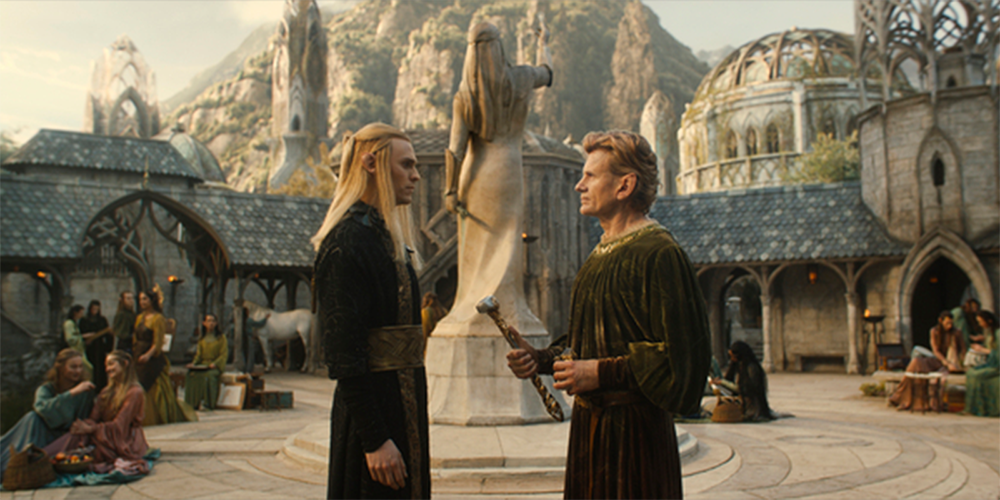
Seven Rings Were Given to the Dwarves
The Seven Rings, given to the Dwarves, reflect their resistance to domination but their vulnerability to greed. While they didn’t become servants of Sauron like men, the rings amplified their lust for wealth, leading to internal conflicts and the eventual downfall of many Dwarven kingdoms.
The live adaptation follows that the mightiest of the rings was first given to King Durin III, which played a perfect example of the power of the rings and its effect on amplifying the weaknesses of each race.


Three Rings Were Given to the Elves
The Three Rings for the Elves play a crucial role in Tolkien’s lore, though much of this has not yet been fully revealed in The Rings of Power TV adaptation. These rings represent purity, preservation, and wisdom, offering a stark contrast to the corruptive influence of the other rings tied to Sauron. If you don’t mind potential spoilers from Tolkien’s works, continue reading to explore the deeper symbolism behind these rings.
- Vilya (The Ring of Air): In Tolkien’s lore, Vilya is the mightiest of the three Elven Rings. It was initially owned by Gil-galad, the High King of the Ñoldor, before being passed to Elrond after Gil-galad’s death. Vilya’s powers are associated with healing, preservation, and the element of air, helping Elrond protect Rivendell as a sanctuary against evil. Its blue sapphire and gold band symbolize wisdom and clarity. Though Vilya’s full power hasn’t been explored in the show yet, fans of the lore know it also faded after the destruction of the One Ring, and Elrond carried it with him into the West.
- Narya (The Ring of Fire): Narya, the Ring of Fire, has yet to make a significant appearance in the TV adaptation. However, in Tolkien’s writings, Narya is known for inspiring hope and resistance in the face of darkness. It was first given to Gil-galad, then passed to Círdan, and ultimately to Gandalf. The red ruby of Narya symbolizes courage and the power to rekindle valor in others. Gandalf used its strength to inspire Middle-earth’s free peoples during their struggle against Sauron. Like the other Elven Rings, Narya’s power faded with the destruction of the One Ring, and Gandalf took it with him as he sailed to the Undying Lands.
- Nenya (The Ring of Water): Nenya, worn by Galadriel, has a deep symbolic connection to preservation and protection, though its full significance has not yet been explored in the series. In Tolkien’s lore, Nenya’s powers are tied to the element of water, helping Galadriel maintain and safeguard the beauty of Lothlórien from Sauron’s influence. Made of mithril and set with a white stone, Nenya reflects Galadriel’s wisdom and strength. After the One Ring’s destruction, Nenya’s magic faded, and Galadriel took it with her when she sailed to the West, marking the end of the Elves’ magical era in Middle-earth.
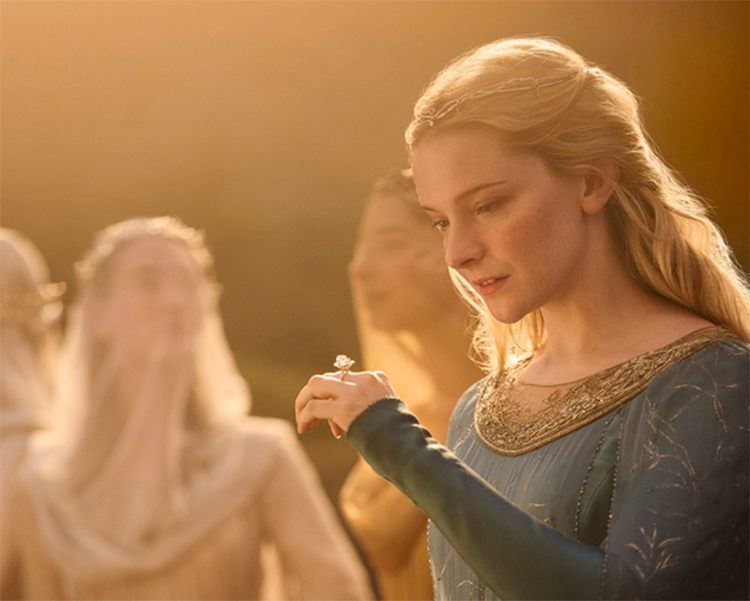
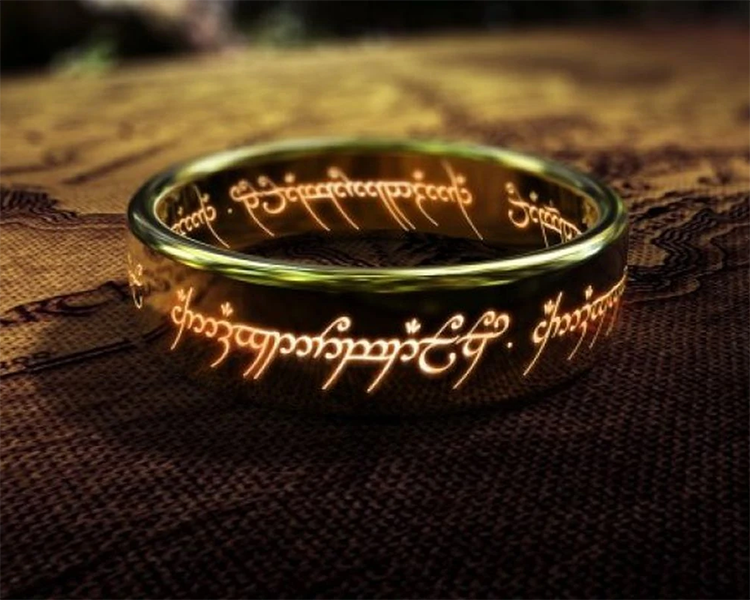
The One Ring
The One Ring, forged by Sauron in the fires of Mount Doom, embodies his will to dominate all life in Middle-earth. Unlike the other rings, which were dispersed among different races, the One Ring stands alone in its malevolence, symbolizing absolute power, control, and the loss of freedom. Its insidious influence tempts even the wisest to betray their values, illustrating the seductive nature of power.
In J.R.R. Tolkien’s lore, the One Ring was crafted with the intent to command the minds of the other ring bearers, binding their wills to Sauron’s own. Although this plan did not fully succeed, the Ring significantly amplified Sauron’s personal power, granting him formidable strength. Deceptively simple in appearance, the Ring bore an inscription in the Black Speech of Mordor, revealing its true nature: “One Ring to rule them all, One Ring to find them, One Ring to bring them all and in the darkness bind them.” This lore underscores the Ring’s role as a symbol of Sauron’s dark ambition and the peril of unchecked power.
Note: As of now, the television adaptation “The Rings of Power” has not fully explored the lore of the One Ring. Future seasons may delve deeper into its history and significance.
Elven Adornments: Light, Power, and Legacy
In The Rings of Power, the adornments of the Elves are far more than decorative items; they carry the weight of history, embodying the light of Valinor, the craftsmanship of the Elves, and the legacies of some of Middle-earth’s most significant figures. Two of the most iconic items—Finrod’s dagger and Fëanor’s hammer—are steeped in meaning, symbolizing both the brilliance and the potential downfall inherent in the Elves’ pursuit of creation and power.
Finrod’s Dagger
Finrod’s dagger is a relic of the Elder Days, holding great personal and historical significance. Once wielded by Finrod, Galadriel’s brother, the dagger became hers after his death at the hands of Sauron. It serves as both a personal reminder of her loss and a symbol of her vow to destroy the evil that claimed her brother’s life. The dagger itself tells the story of the creation of Fëanor’s greatest works, the Silmarils—three jewels crafted from the light of the Two Trees of Valinor. Gold and silver intertwine in the weapon’s design, representing Laurelin and Telperion, with pearls inset at the hilt symbolizing the Silmarils.
Crafted by Fëanor, Finrod’s uncle, the dagger was passed down as a family heirloom, with Finrod wielding it until his death. After his passing, Galadriel took up the blade, dedicating herself to the mission of eradicating Sauron. In the TV adaptation, the dagger represents Galadriel’s connection to her past and her enduring grief, as well as her relentless pursuit of vengeance. When she eventually lets go of the dagger in Season 1, it symbolizes her acceptance that the past must be left behind for a new future to be forged. The alloying of the gold and silver of the dagger with mithril represents the merging of past legacy and present necessity, reinforcing the idea that true creation requires sacrifice.
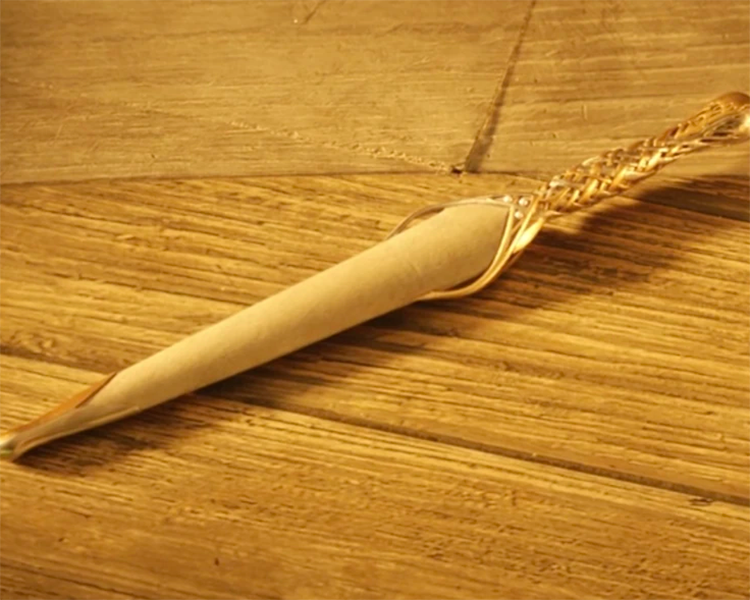
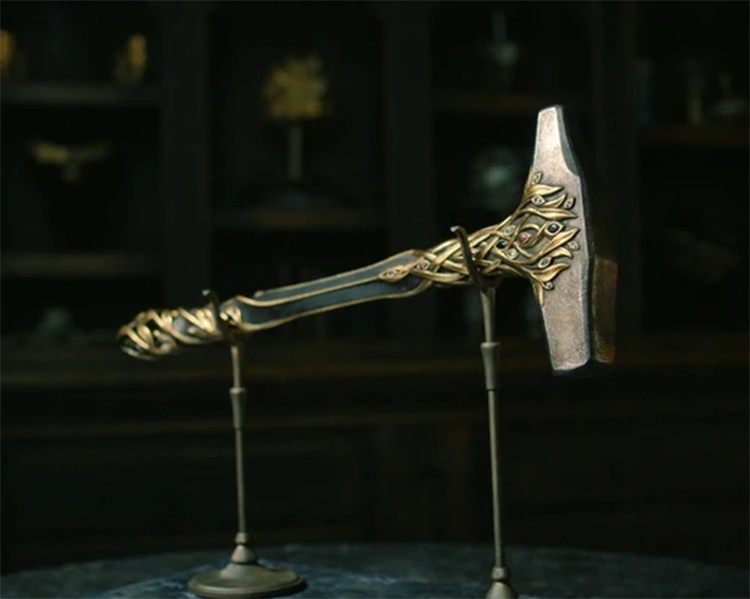
Fëanor’s Hammer
Fëanor’s hammer is a tool of immense historical significance, wielded by the legendary Elven-smith Fëanor to craft numerous artifacts, the most notable being the Silmarils—jewels that contained the pure light of Valinor. These jewels were so precious that they ignited wars, fueling the conflicts of the First Age and leading to widespread suffering. Fëanor’s hammer is not just a symbol of unparalleled craftsmanship; it also represents the consequences of pride and ambition, two traits that defined Fëanor and led to his downfall.
In Tolkien’s lore, Fëanor’s hammer is currently kept in the workshop of his grandson, Celebrimbor, another master Elven-smith. The hammer’s presence in The Rings of Power is a powerful reminder of the dangerous legacy left by Fëanor. Much like his grandfather, Celebrimbor is driven by the desire to create something extraordinary—something that could surpass even the Silmarils. This ambition leads him to forge the Rings of Power, setting into motion a chain of events that will result in the eventual domination of Middle-earth by Sauron.
The hammer, once used to create the Silmarils, has now passed into the hands of Celebrimbor, serving as a direct link between the tragedies of the First Age and the impending conflicts of the Second Age. The tool itself becomes a symbol of the cyclical nature of ambition and the consequences of great power. Just as Fëanor’s obsession with his creations led to his downfall, so too does Celebrimbor’s desire to surpass his grandfather foreshadow the dark path ahead, as he forges the Rings that will eventually bind Middle-earth under Sauron’s will.
Together, Finrod’s dagger and Fëanor’s hammer embody the dual nature of Elven creation—beauty and light bound to ambition and sacrifice. These items reflect both the incredible talents of the Elves and the tragic consequences that often follow in the wake of their greatest works, reminding us that in Middle-earth, creation and destruction are often two sides of the same coin.
Adornments of Númenor: Heritage and Downfall
The island kingdom of Númenor is one of the most majestic and tragic civilizations in Tolkien’s world. The adornments worn by its people reflect their pride in their heritage, but also foreshadow their eventual downfall. Through the crowns, crests, and other jewelry, Númenor’s story is told—one of strength and wisdom slowly giving way to arrogance and greed.
Elendil’s Crest and Armor
Elendil’s armor and crest are symbols of his noble lineage as a direct descendant of the early kings of Númenor.
These adornments, often featuring motifs that connect to the stars and the sea, represent the strength, wisdom, and leadership that Elendil embodies.
As the future founder of Gondor and Arnor, his adornments foreshadow his critical role in the fight against Sauron.
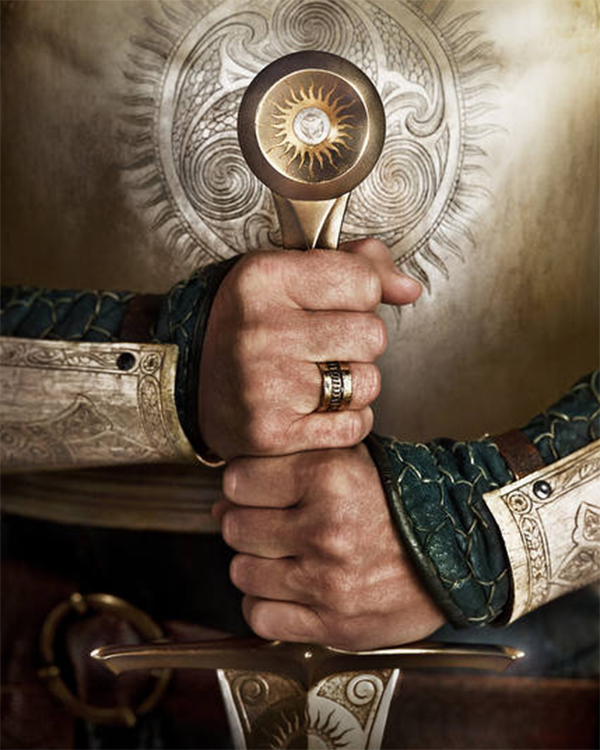
Númenórean Crowns and Royal Jewels
The crowns and royal jewels of Númenor are symbols of the kingdom’s power and authority. However, as the kings of Númenor became increasingly obsessed with immortality and domination, these adornments came to symbolize their hubris. The royal jewels, once a sign of wisdom and connection to the Valar, ultimately represent Númenor’s descent into corruption and destruction.
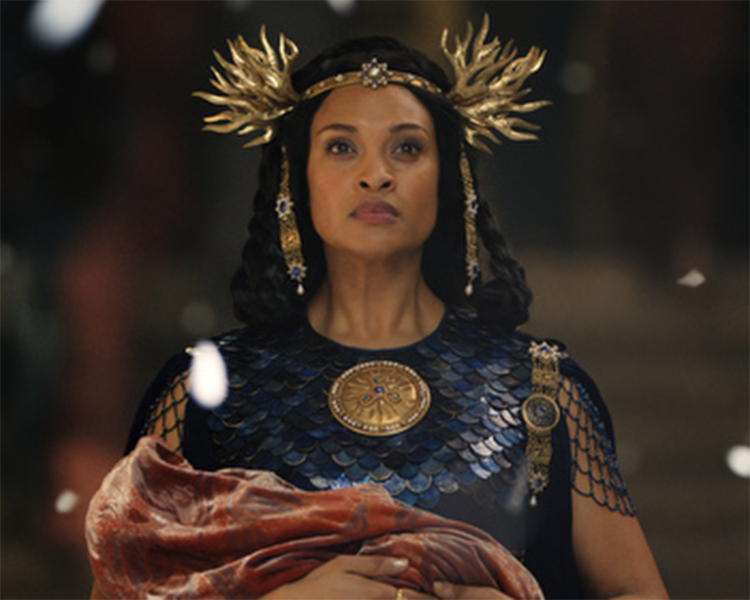
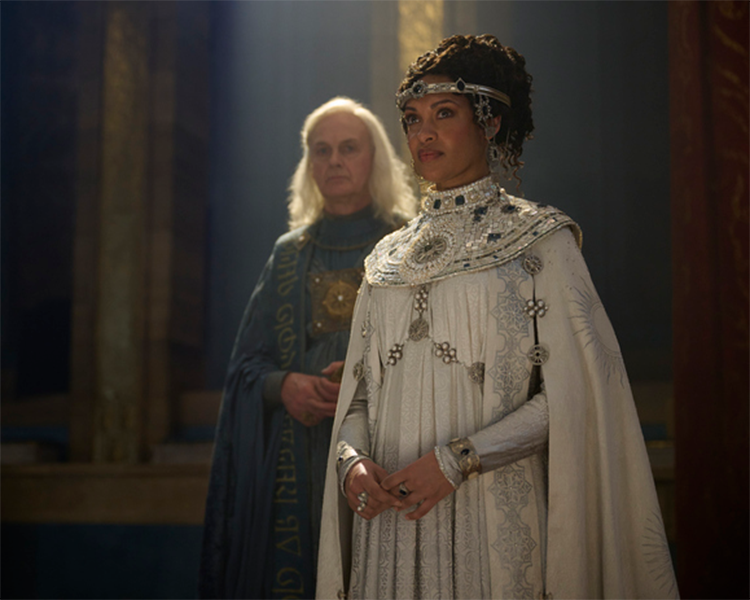
Dwarven Jewelry: Craftsmanship, Greed, and Resilience
The Dwarves of Khazad-dûm are renowned for their exceptional craftsmanship, and their jewelry is a testament to their unmatched skills as miners and smiths. Dwarven jewelry not only reflects their connection to the earth and the wealth it provides but also symbolizes key aspects of their culture—resilience, pride, and, at times, greed.
The story of Dwarven adornments in The Rings of Power reflects a delicate balance between the pursuit of prosperity and the dangers of overreaching ambition.
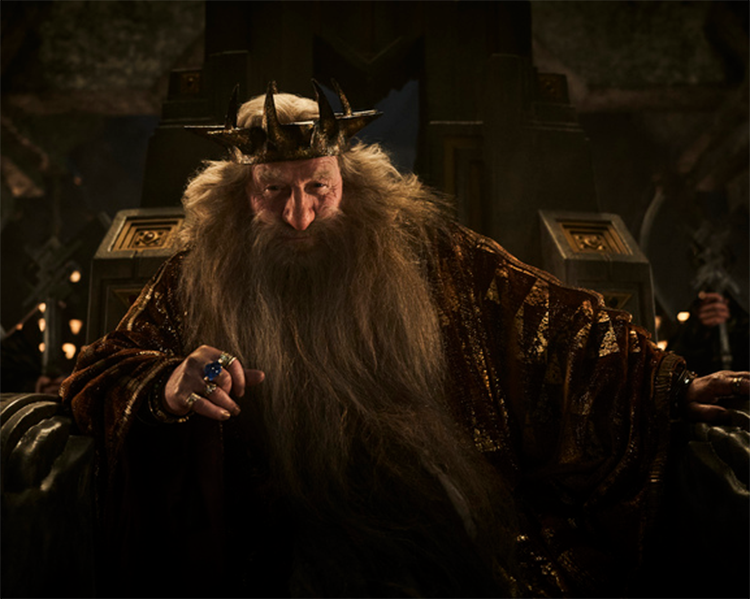
The Design of Dwarven Adornments and Culture
Dwarven jewelry is renowned for its intricate, bold designs, reflecting their deep connection to the earth and their rugged environment. Made from precious metals like gold, silver, and mithril, Dwarven adornments feature angular and geometric patterns that symbolize the strength, determination, and resilience of their people. These pieces are not only ornamental but also carry significant cultural meaning, representing the unyielding nature of Dwarven craftsmanship and the pride they take in their stone-carved cities.
However, the exceptional craftsmanship of the Dwarves also comes with a darker side. Their desire for wealth and perfection can sometimes lead to greed and internal conflict. In The Rings of Power, this tension is highlighted by their pursuit of mithril, a precious material that represents both their greatest achievements and their potential downfall. The Dwarves’ relentless drive to mine more of this coveted metal risks destabilizing their own foundations, showcasing the delicate balance between ambition and destruction.
Mithril in The Rings of Power
Mithril, the most prized material in Middle-earth, plays a key role in The Rings of Power. Known for its unmatched strength, beauty, and rarity, it is fiercely guarded by the Dwarves of Khazad-dûm. Lighter than any other metal yet stronger than steel, mithril’s silvery sheen captures an ethereal light, symbolizing both the pinnacle of wealth and achievement in Dwarven culture. Possessing even a small amount is a mark of great fortune, and the legend of mithril’s creation—born from the light of a Silmaril—adds a mystical quality to its allure.
However, the Dwarves’ intense desire to mine more mithril leads to internal strife and risks their future. In The Rings of Power, this precious metal represents both their greatest strengths and potential downfall. As they dig deeper into the earth, they disrupt the balance between prosperity and destruction, with their relentless pursuit of riches threatening to unravel the foundations of Khazad-dûm. Mithril’s duality—symbolizing wealth and ruin—mirrors the broader themes of Dwarven culture, illustrating how their pride and brilliance can be undermined by unchecked ambition and greed.
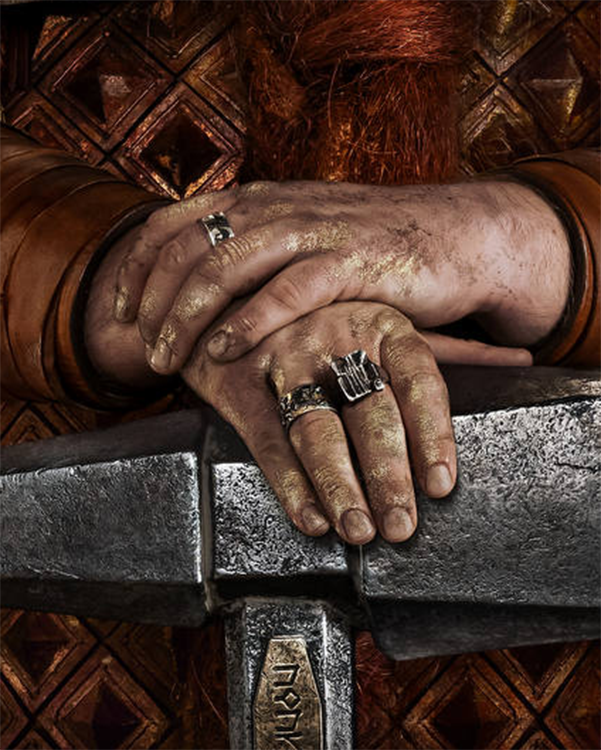

Harfoots and Simple Adornments: Symbol of Connection to Nature
The Harfoots, the ancestors of Hobbits, wear simple, nature-inspired jewelry that reflects their deep connection to the natural world. These adornments serve as symbols of their humility and their harmony with the land, in stark contrast to the grand jewels of the Elves or the Dwarves.
Leaf and Nature-Inspired Jewelry
The Harfoots often wear small pieces of jewelry fashioned from leaves, flowers, and other elements of the earth. These adornments symbolize their purity, their connection to nature, and their desire for a peaceful, simple life. In a world filled with powerful rings and elaborate crowns, the Harfoots’ adornments remind us of the importance of harmony and balance.
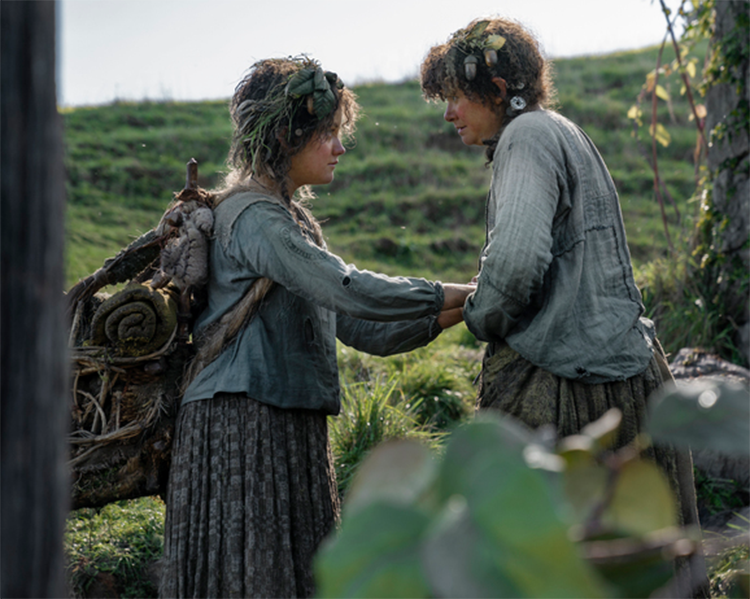
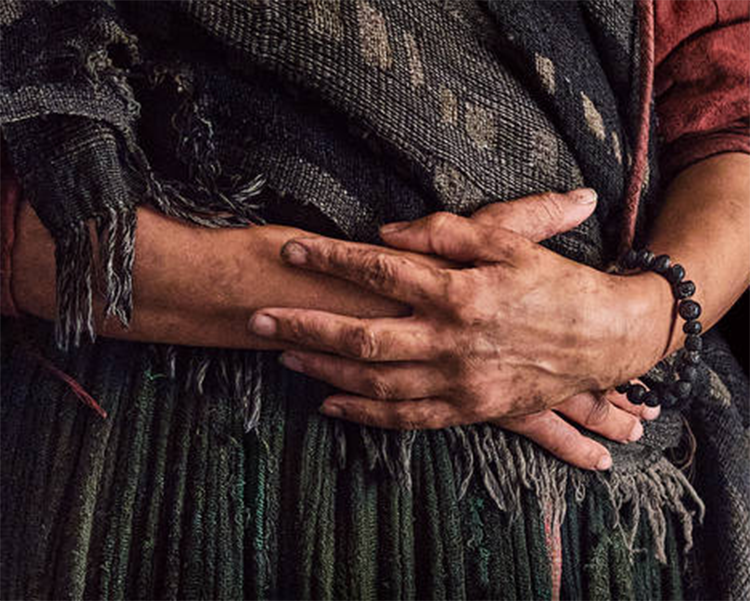
The Orcs and Corrupted Adornments
The Orcs, creatures twisted by darkness, wear adornments that reflect their corruption and enslavement to Sauron’s will. Their crude jewelry and armor serve as grim symbols of decay, subjugation, and fear.
Dark Armor and Spikes
The armor worn by the Orcs is a manifestation of their violent nature and their allegiance to Sauron. Spikes, chains, and dark metals dominate their appearance, symbolizing the brutality and fear that Sauron uses to control them. These corrupted adornments are a far cry from the graceful jewelry of the Elves, representing the loss of individuality and freedom under Sauron’s rule.
Adornments of Subjugation
Chains and broken metals also serve as symbols of subjugation among the Orcs. These adornments reflect their servitude and the dehumanizing effect of Sauron’s control, where once-free beings are reduced to mindless soldiers of darkness.
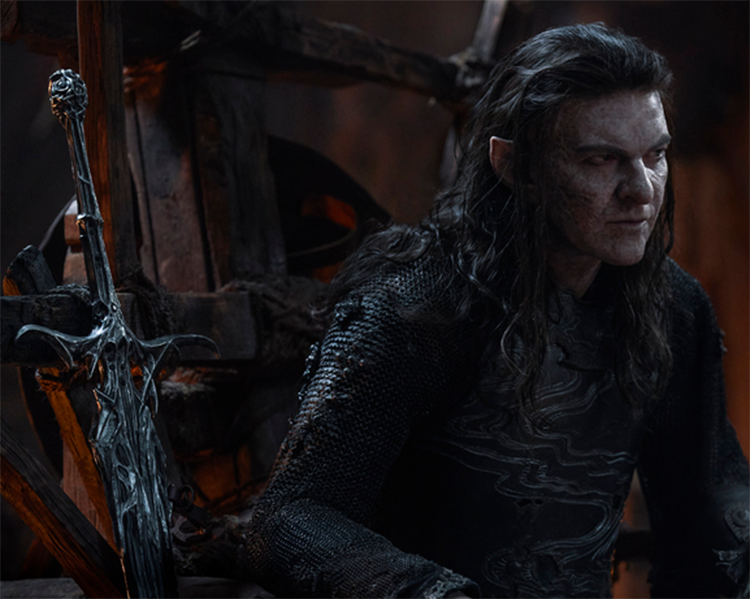

Sauron’s Jewelry and Adornments: Manipulation and Hidden Power
Sauron, the dark lord behind much of the conflict in The Rings of Power, uses adornments to manipulate and deceive. Though his appearance shifts throughout the ages, his use of subtle jewelry speaks to his cunning and desire for control.
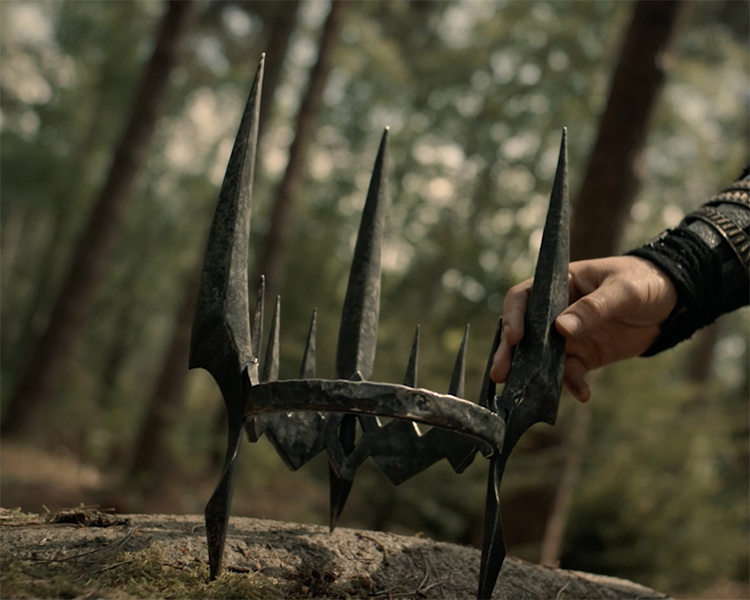
Subtle Uses of Light and Darkness
Sauron’s choice of adornments, when in disguise, reflects his ability to manipulate and seduce. In his fair form, he may wear items that reflect his deceptive charm, subtly using adornments of light and all white to gain the trust of others with this form of softness. These adornments are symbols of hidden power, representing the allure of evil disguised as something beautiful.
As the season progresses, Sauron’s clothes and adornments slowly progress from all white to all black, representing the darkness unveiling in his journey within Eregion and with Celebrimbor.
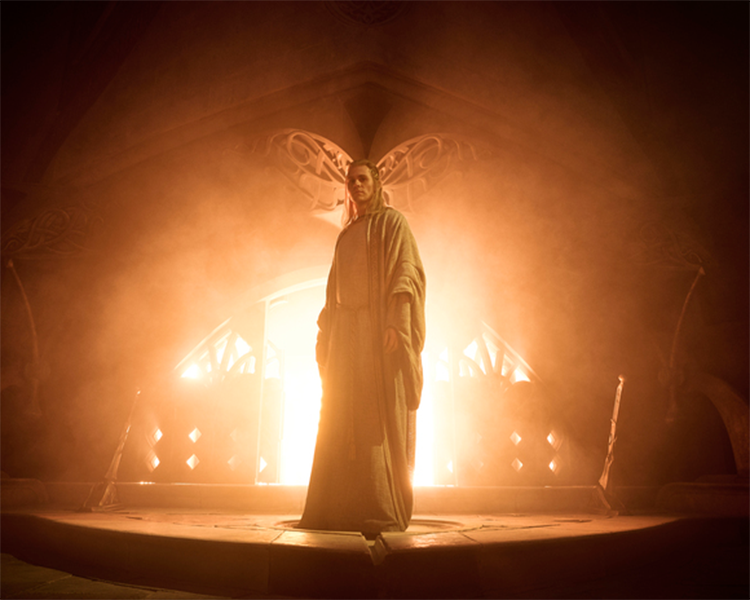
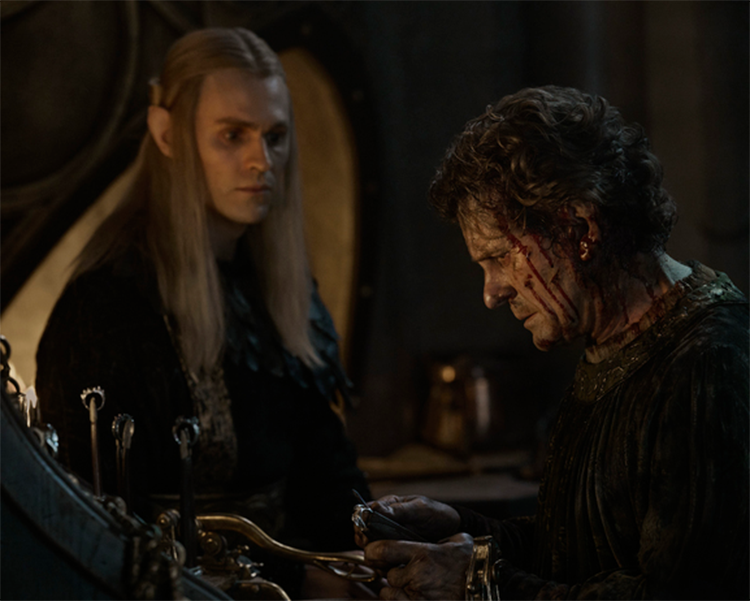
Resources:
- Amazon Prime’s Rings of Power Images: https://press.amazonmgmstudios.com/
- Amazon Prime’s Rings of Power Information and References: https://www.youtube.com/
- Amazon Prime’s Rings of Power Information and References: https://www.cbr.com/
- Amazon Prime’s Rings of Power Information and References: https://tolkiengateway.net/
- Amazon Prime’s Rings of Power Information and References: https://lotr.fandom.com/
- Amazon Prime’s Rings of Power – Fëanor’s Hammer Information and References: https://the-rings-of-power.fandom.com/
- Amazon Prime’s Rings of Power – Finrod’s Dagger Information and References: https://the-rings-of-power.fandom.com/
- Blog outline and revising assisted by AI resources such as Open AI.

Premier Jewelry Repair Services
Restoring the Beauty and Legacy of Your Own Treasured Adornments
Just as The Rings of Power captivates audiences with its iconic and symbolic Elven jewelry, My Jewelry Repair offers premier restoration services to ensure your own personal heirlooms remain in pristine condition. Whether you possess a replica of an Elven ring or a family piece that carries its own unique legacy, our expert craftsmen are here to help. Our Master Jewelers bring the highest level of care and expertise, ensuring that your jewelry is restored with precision and respect, maintaining its beauty and significance for generations to come.
To learn more about our Premier Jewelry Repair Services and how we can help preserve the legacy of your treasured adornments, visit our Services Page.
